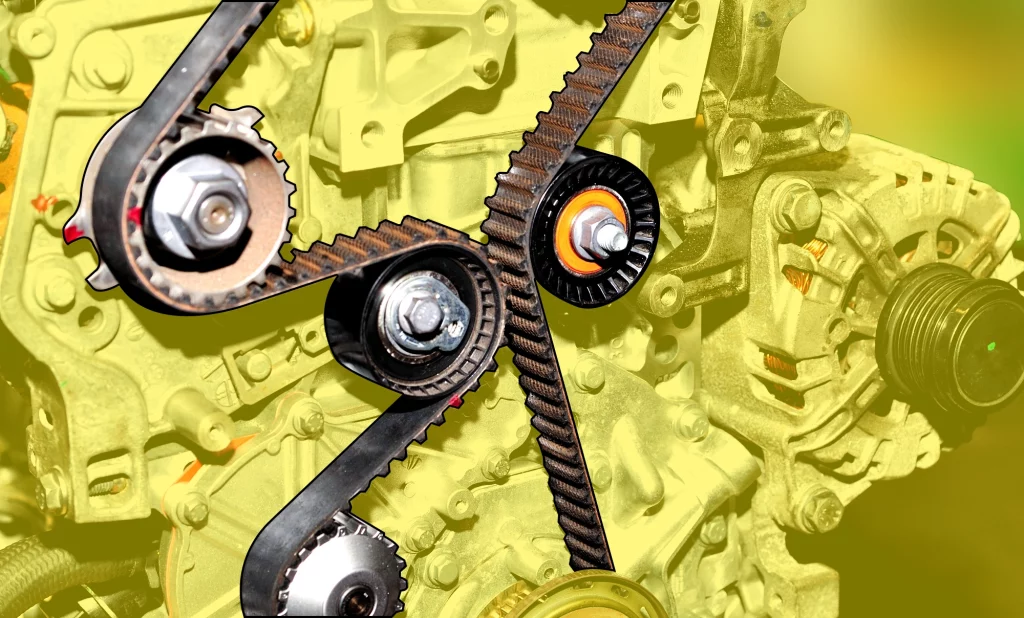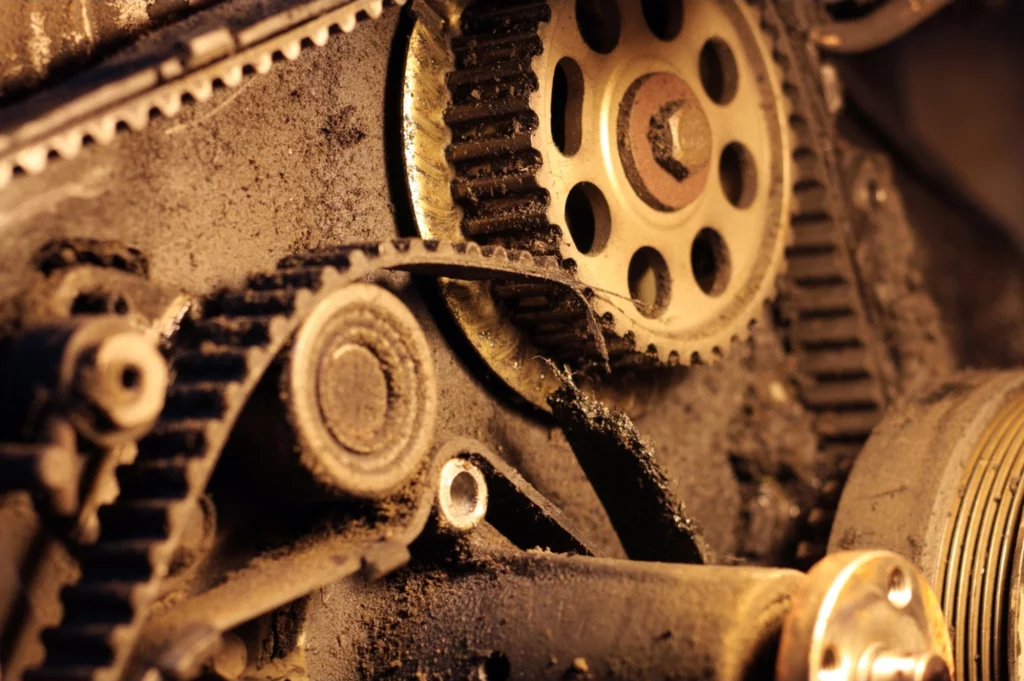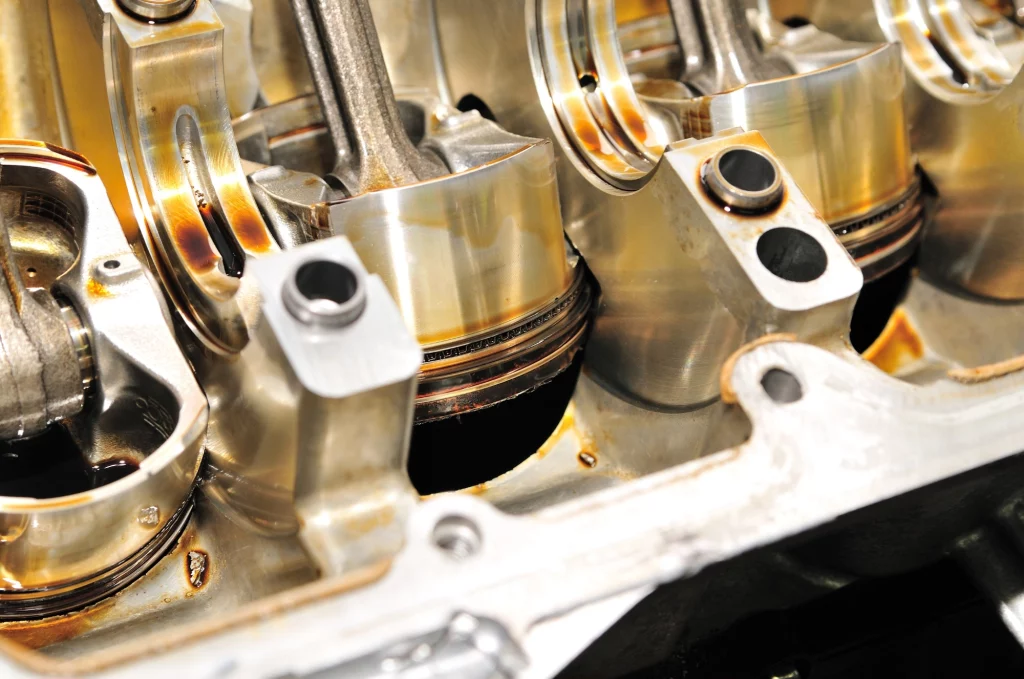What is the Timing Belt System for?
The timing belt is responsible for keeping the camshafts and crankshaft pulley in sync. It controls the rate at which the pistons and engine valves operate to ensure that they don’t collide.
The system consists of a belt, guide pulleys, tensioners and a water pump. The pulleys and tensioners are essential as they keep the belt tight against the camshaft and crankshaft pulley. Without the appropriate tension the belt can slip and the entire engine would become out of sync.

What Causes the System to Fail?
While fairly uncommon, the timing belt can snap due to any exposure to fluid, such as oil or coolant. If the belt is contaminated it will wear down the quality of the belt causing it to eventually snap. Ensuring that the timing belt cover is on correctly will prevent any fluid damaging the belt.

The more common reason for a timing belt to fail is because of faulty pulleys and tensioners. Either improper fitting or the use of low quality parts can have an adverse effect on the timing belt.
Some common issues that can occur are:
- Tensioner vibration
- Snapped tensioner arm
- Missing or damaged bearing seal on pulleys
- Loose, stuck or sticking pulleys
- Grease leaking from pulley bearing
- Worn belt tracking area on the surface of pulleys
All of these issues are caused by poor fitting or poor quality parts. This highlights the importance of not only using high quality parts but also having a trained professional fit them and carry out regular maintenance.
Additionally, it is important to note that, like most vehicle components, the timing system is susceptible to general wear and tear and likely will not last the lifespan of the engine.
Why do These Parts Need Replacing?
The timing system is one of the most crucial parts of the engine, ensuring that the engine valves and pistons do not collide causing critical damage to the engine.
Replacing the timing belt is a fairly simple job, as the belt is usually installed on the outside of the engine and protected by a cover. However, if the engine valves and pistons were to become damaged the entire engine would need to be disassembled and this would incur huge labour costs.

When Should the Timing Belt be Replaced?
Unlike the timing chain, the timing belt will not give a clear audible indication that it is about to fail. Some drivers may notice a high pitched whining noise or faint clicking sounds. This is the sound of a worn out belt rubbing against other components. This should not be ignored as it means that the belt could snap at any time.
Some other signs of a failing timing belt include:
- Rough idling or engine misfiring; If the engine feels like it is vibrating or hesitating while slowing down or coming to a stop
- Lack of engine performance; A noticeable drop in acceleration and power
- Oil or coolant leaks; If the timing belt cover is damaged this can lead to fluids leaking out from the engine. Any noticeable leaking should be inspected immediately
- Engine overheating; The timing belt system is also linked to the water pump which is responsible for cooling the engine. If the engine is overheating this is a sign that the timing system is compromised
Older timing belts would typically see about 40,000 to 60,000 miles before needing to be replaced, however, with modern advances in materials and technology, timing belts in the market today could see about 80,000 to 100,000 miles.
As with most components the quality of driving and conditions will impact this. As the engine valves and pistons move relative to the speed of the vehicle, if the driver were to rapidly accelerate the sudden increase in speed would cause the timing belt to be jerked putting extra pressure on the teeth. If this happened continously it could cause the teeth to ultimately be ripped off.
It is also recommended to have the belt and respective components checked once a year during the vehicle’s annual service, as this will ensure the belt is in the best condition and avoid any serious damage.
GTAutomotive Timing Belt Components
At Gt Automotive our range of Timing Belt Components are OE quality. Our high level of standard is reflected across the whole range featuring NSK OE quality bearings, Dayco belts and solid construction to ensure efficient engine operation and rigid belt tension.

